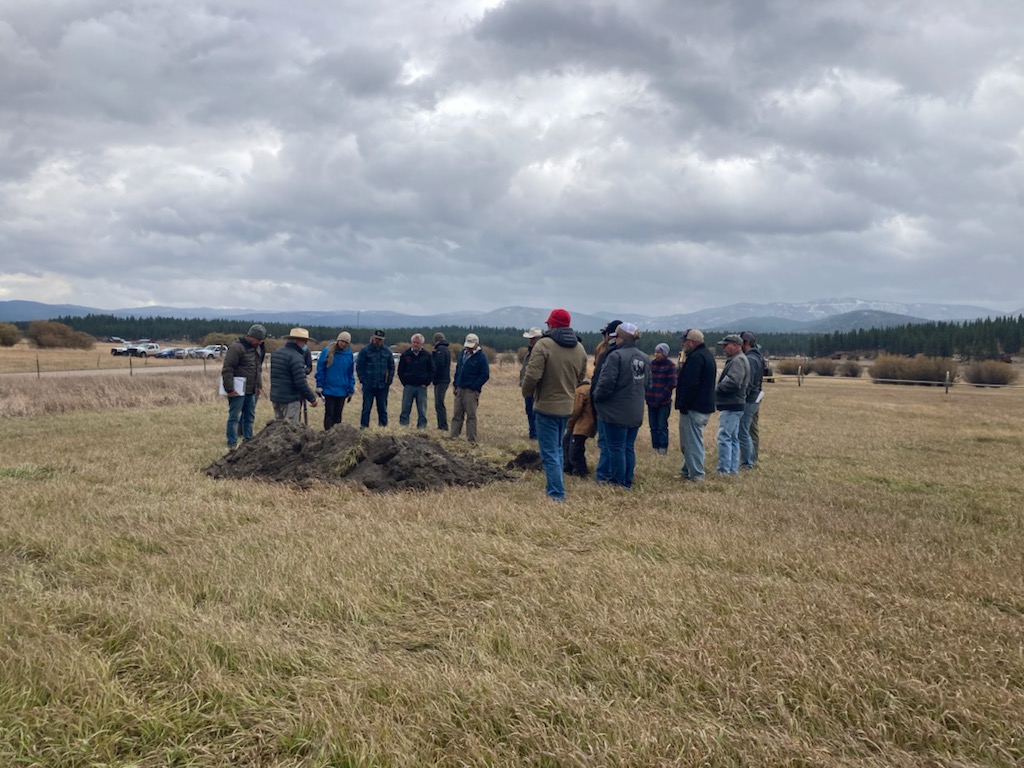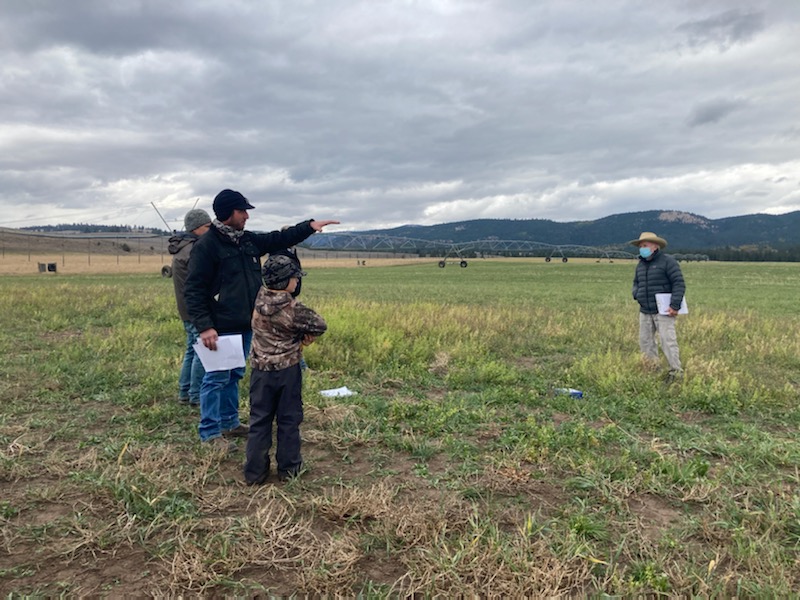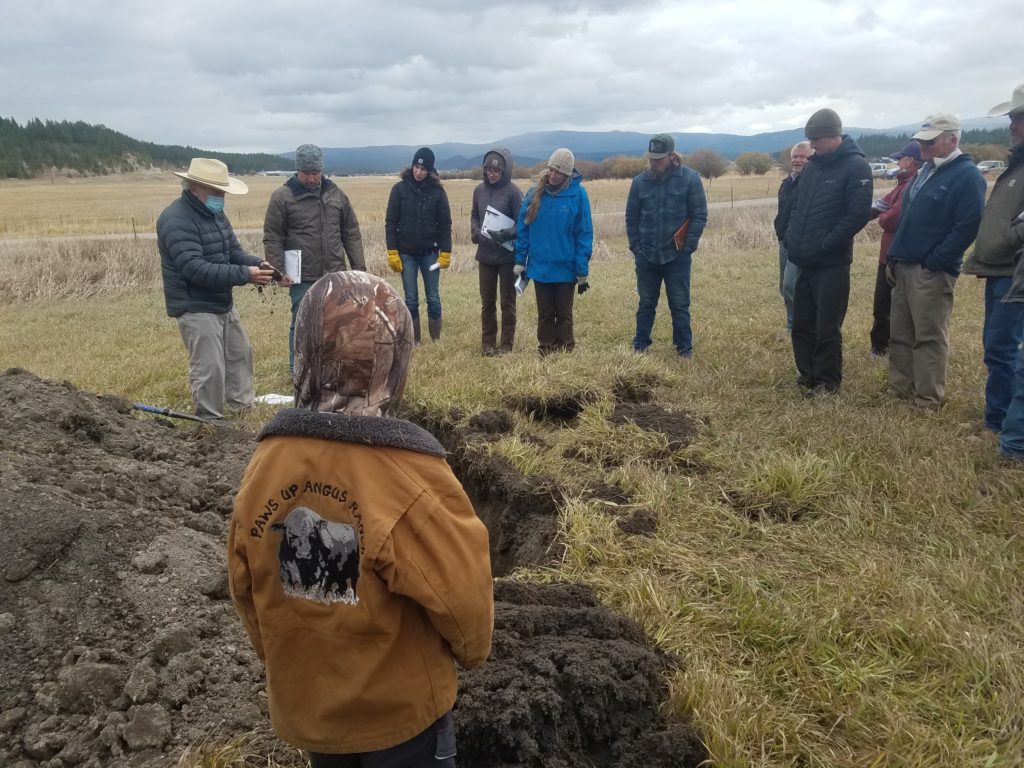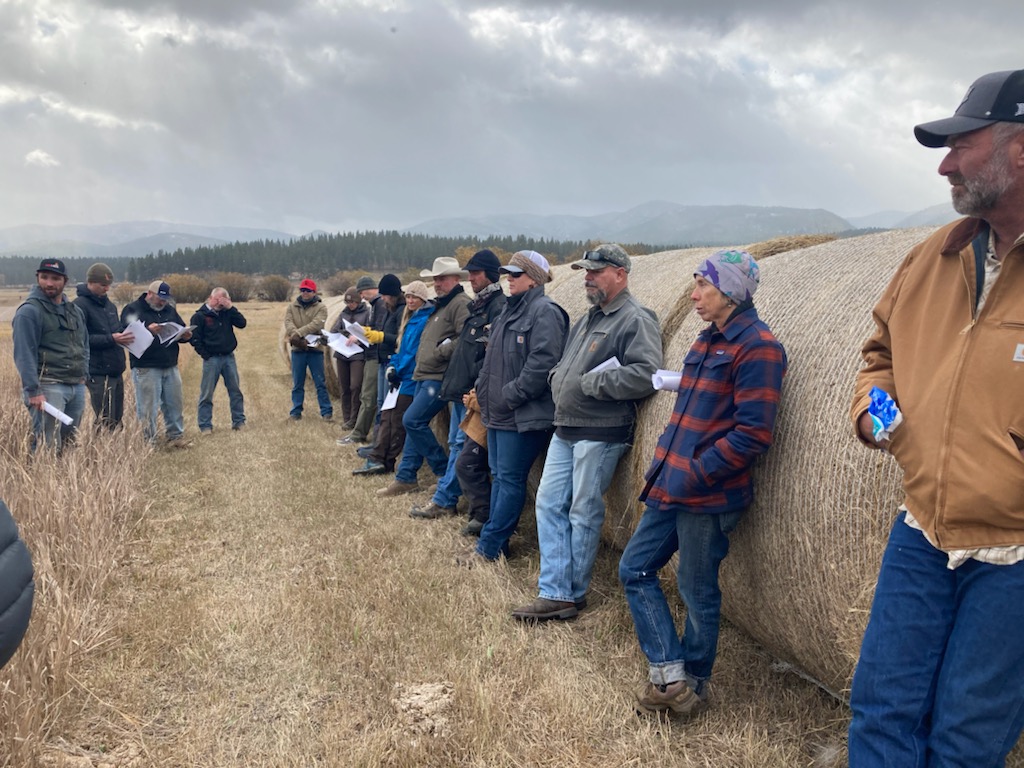Every fall, members of the Blackfoot Challenge’s Soil Health Work Group gather to tour area ranches implementing new and innovative approaches to improving soil health. The Work Group, established in 2016, provides a forum to explore, encourage, and facilitate soil health in the Blackfoot. On a blustery day in October, this year’s tour brought participants to ranches in Potomac and Greenough.

At the first tour stop, work group members gathered around a freshly-dug soil pit to discuss and observe soil structure, organic matter, and rooting depth. In layman’s terms, healthy soil resembles black cottage cheese or BBs hanging on roots with air pockets and earth worms. The group discussed the symbiotic relationship between diverse plant roots and the “underground herd” of microorganisms, working together to release and absorb nutrients and sugars at different depths. This particular field has been hayed using the same method for over a century. Soil compaction and homogeneous sod-bound grass roots is resulting in poor water infiltration. To reverse this trend, the landowner is experimenting with shallow mechanical aeration without disturbing existing soil structure, and is integrating livestock grazing into the cropping rotation to increase soil organic matter and biological activity – two core components of healthy soil.
At the second stop, Kyle Kelley, the Manager for Paws Up Ranch, explained what he has done to rehabilitate fields on the ranch, including the addition of a soil amendment unique to the Blackfoot – carcass compost. Through the Blackfoot Challenge’s Carcass Pick Up Program, domestic livestock carcasses are collected and composted at a facility operated by the Department of Transportation. Through an agreement with the Challenge, Kyle spreads this byproduct on fields to enhance his soil rehabilitation process.


At this stop, Barry Dutton, the Challenge’s contracted Soil Scientist, also explained the digitized soil moisture monitoring system in use at this field at Paws Up, in addition to a growing number of ranches throughout the watershed, in which probes are installed at varying depths to track irrigation applications relative to the water-holding capacity of the soil.
The group also discussed the upcoming Biochar Partnership Project in which the US Forest Service, The Nature Conservancy, and the University of Montana will produce (and study) approximately 200 tons of biochar created from forest restoration activities occurring in the Gold Creek area. Made by burning small, nonmerchantable trees under low-oxygen conditions, biochar can be used to improve the viability of agricultural soils, in addition to other beneficial uses. As a project partner, the Blackfoot Challenge will work with willing area landowners to apply the resulting biochar on agricultural lands in small demonstration plots under different scenarios to assess the potential benefits and challenges of using biochar.

At the end of the day, the group looked towards future needs and opportunities for enhancing soil health on private lands in the Blackfoot. The group is keeping an eye on a number of evolving trends and technologies, including those related to regenerative agriculture, regional and global markets, water conservation innovations, and carbon sequestration. Ultimately, the goal is to continue improving the capacity of Blackfoot soils to function as a living system that sustains our natural resources, livelihoods, and communities.
Interested in becoming of this soil health learning community? Shoot a note to Land Steward Brad Weltzien at brad@blackfootchallenge.org.
Photos by Leigh Kelley and Cindy Super.
